University Tuition
In this project we take a look at the price of tuition in the United States from 2014 to 2021.

QUESTIONS TO ANSWER
- Has the price of fees increase through the years and which years had the most uptick?
- Tuition comparison between public schools and private schools?
- Which form of service or type of university will be better?
Hypothesis
- Yes, for majority states, the cost for tuition has increased.
- The cost for private universities is expensive compared to public universities.
- Private Universities exposes the children to possibilities that public universities don’t have access to, such as; better gyms, well-funded sports programs, better learning facilities which would be detrimental to further their growth, because of being funneled through private universities puts them at an advantage.
Date Analysis
Tuition
In this data we look at the highest tuition fees over the years
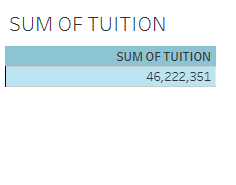
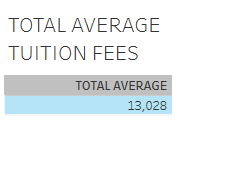
Total Tuition fees
In this table we look at the Total tuition across the board from 2014 to 2021.
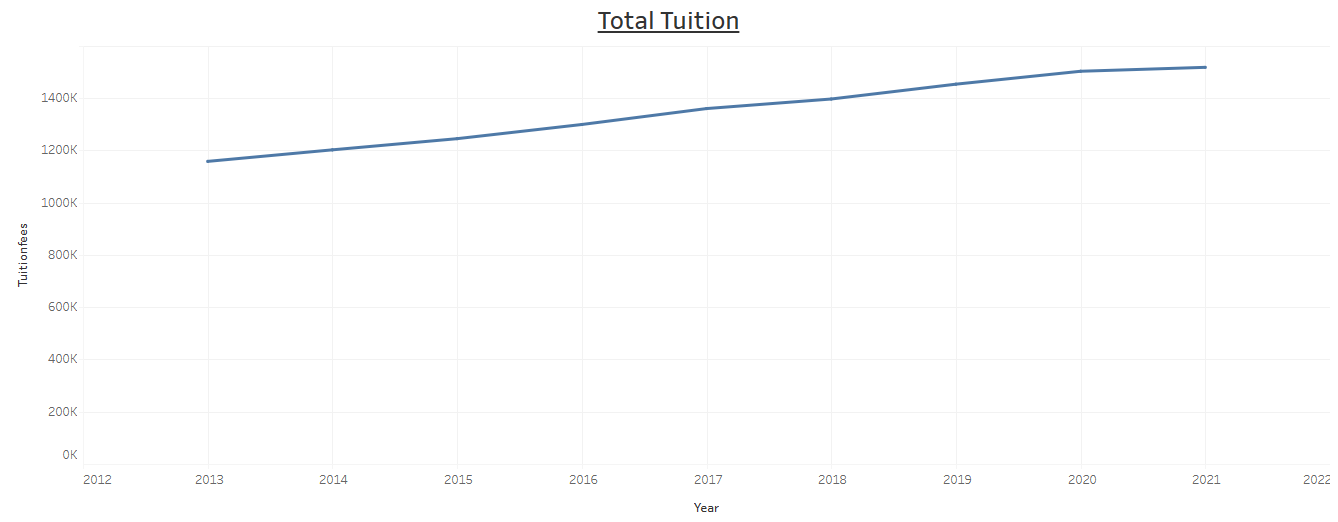
And we see the uptick of tuition for schools increase over the years which concludes that the trend of university tuition will continue to rise.
Average Room and Board Prices from 2014 to 2021
In this data we can see the expenses for accommodation on university campuses have steadily increased.
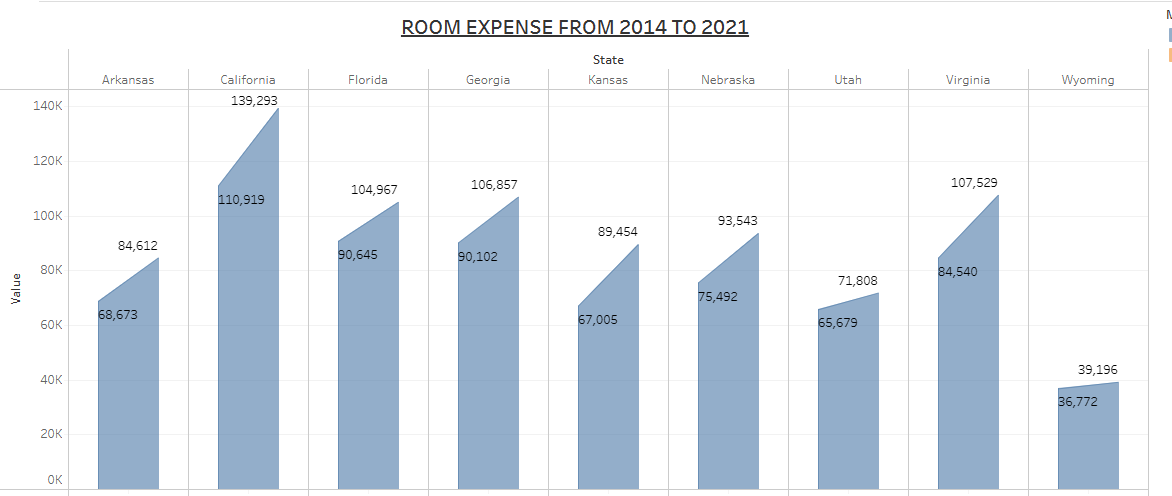
Acquiring accommodation in California is very expensive and this is because the average cost of living in the US for international students is $2990 per month in California.
Today's California students, by contrast, graduate with an average of more than $20,000 in student debt.
Average Tuition From 2014 to 2021
As we can see in this data, there's an uptick of tuition fees.
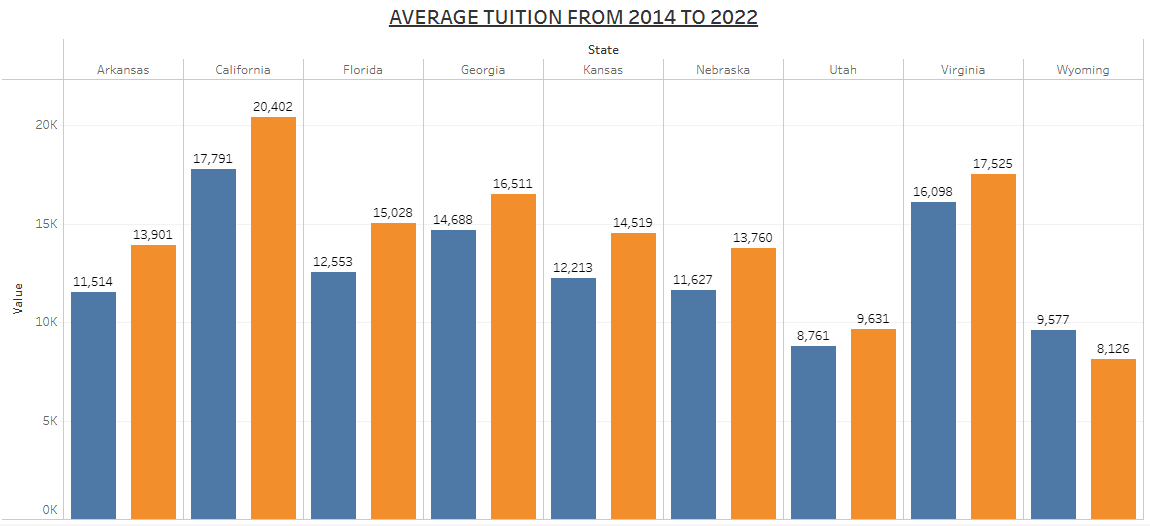
In this table, we notice that the cost for tuition has made an increase which affects both public schools and private schools, but in exception of Wyoming which has a lowered its prices for tuition from 2014 to 2021. Which makes it the cheapest state to study in.
SUM TUITION IN PUBLIC AND PRIVATE INSTITUTIONS
While private universities tend to have the most expensive college tuition, the price of public universities has also risen. From 2010 – 2020, college tuition costs at public universities increased by 31.4%.
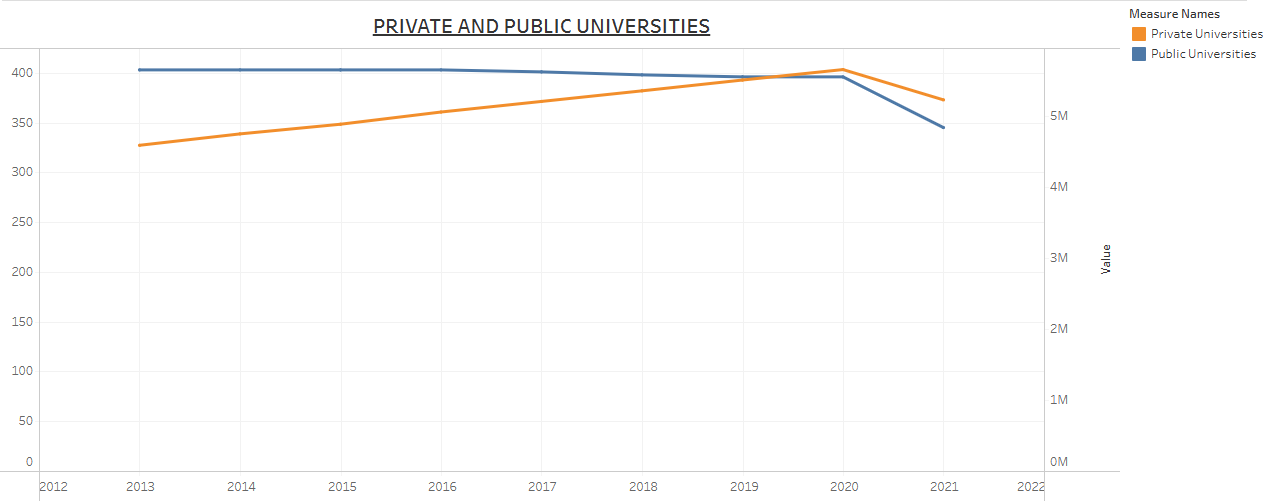
The cost of tuition has gone over the years and in 2020, the prices was the it's peak
TUITION TYPES
We look at the total fees of private and public out of state universities.
.
Public Out of State
Why is out of state tuition a thing?
Schools reasoning for charging higher out-of-state tuition is because non-resident students come from families who haven't paid tax dollars to the state, and thus to the school. Out-of-state tuition brings in more revenue to the school, which can be used for a variety of purposes.
Public In State Tuition
In-state tuition is the rate students pay to attend a public or state college or university in their state of residence. Because public schools receive state funding to help supplement costs and lower the rates learners pay, students who attend in-state institutions often pay much less than out-of-state degree-seekers.
FEES FOR ALL STATES
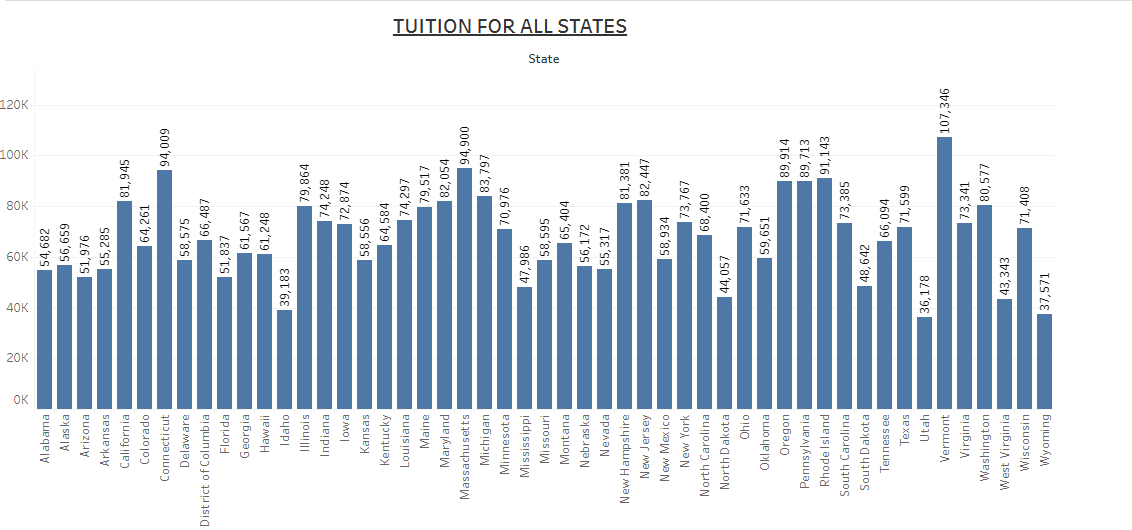
Wyoming has the cheapest tuition for tertiary education.
The key to its low tuition is that Wyoming state government significantly underwrites the cost of public education to the tune of $15,000 per fully enrolled student per year. In fact, there seems to be a strong general correlation between the level of state government underwriting and low state tuition costs.
conclusion
U.S. News data shows that tuition and fees for the school year cost an average of about $39,700 at ranked private schools. Average tuition for out-of-state students attending ranked public colleges comes to about $23,000, and average in-state tuition at public institutions is about $10,400.
In conclusion, private schools provide great education but it also causes a disadvantage to those coming from disenfranchised and impoverished parents. It leaves the parents in a situation where they are faced with the problem of not being able to provide the best for their children. Which is unfair to the children who are not given the same access to opportunities to help them grow academically. The ability to have best facilities and resources should be available for all students, regardless of which state or family background they come from.